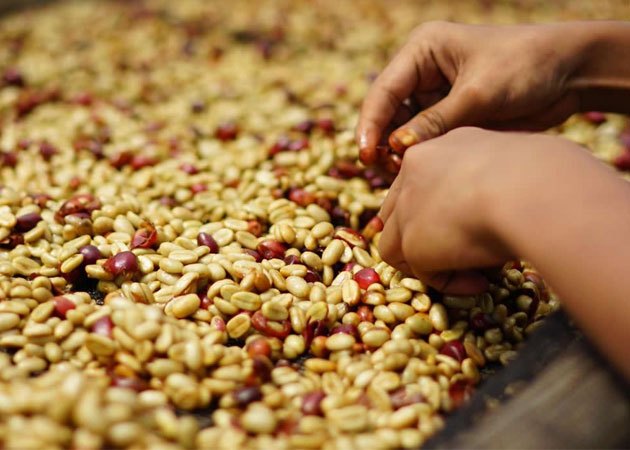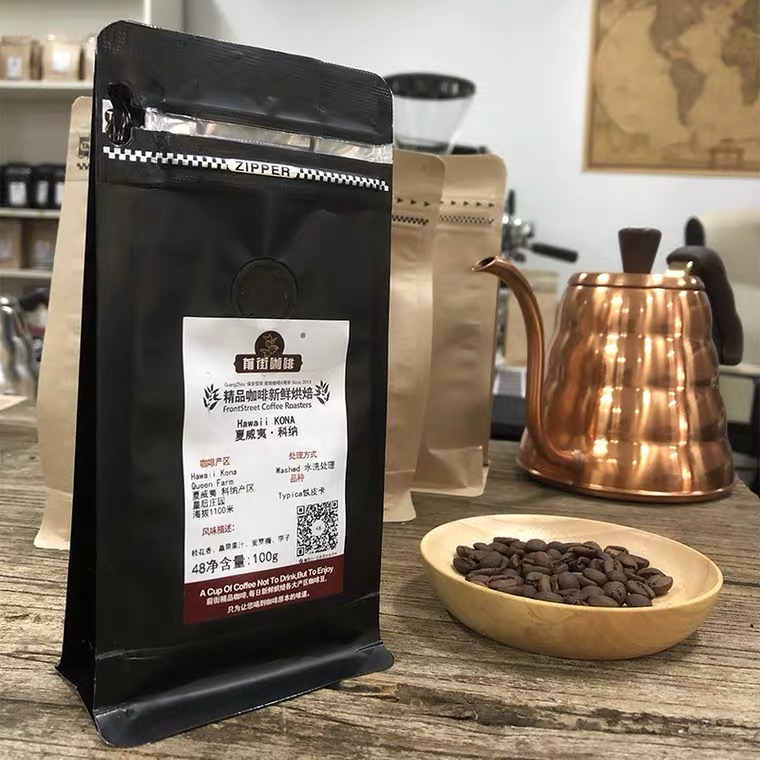Caramel-flavored coffee beans the only coffee bean producing area in the United States is Hawaii Kona coffee bean processing.
Even though you think like this: Hey? There is something in this coffee. . What's the taste of sweetness? Aah! Caramel! It's caramel sweetness! Rest assured that the coffee with caramel flavor does not add any sweetener. The rich sweetness is thanks to what the very skilled bean baker brought out in the baking process. It usually comes from coffee grown in rich soil.
These caramel flavors are affected by every part of the planting, production and baking process. First, the soil where coffee beans are grown may also have a high potassium content and a balanced PH value, allowing coffee plants to absorb minerals. Then the coffee cherries will be harvested at the peak of ripening, allowing the sugar in the pulp to enter the coffee beans. The processing method of producing sweet beans is generally semi-washing or honey processing. This process washes off the pulp of the cherry, but leaves a thin layer of syrup that sweetens the beans during drying. Finally, the beans are roasted perfectly and moderately baked, caramelizing all these rich sugars and producing a full caramel-like effect.

For example, Kona from Qianjie Coffee has a very long-lasting caramel sweetness. This is closely related to the growing environment of coffee degree.
Kona Coffee Farm is located on the hills of Wai'ono Meadows (Wai'ono means "delicious water"). Hawaiian Queen Coffee has been producing 100% Kona coffee of the highest quality for more than a decade. The 160-acre farm, located between 1800 and 2000 feet above sea level, is a prime location for growing 100% Kona coffee.

Kona coffee beans are neat in shape, with strong sour and sweet taste and supple taste. Although the lower body is often affected by tornadoes, the climatic conditions are very suitable for the coffee industry. There is plenty of rain and sunshine here, and there is no worry about frost damage. It produces more Arabica coffee than anywhere else in the world and maintains high quality.
Real Kona coffee is indeed a treasure in the world and is not easy to find. The best Kona coffee is divided into three grades: ExtraFancy, Fancy and NumberOne. This third-class coffee is produced on manors and under natural conditions. Most of the coffee on the market that calls itself "Kona" contains less than 5% of the real Hawaiian Kona coffee.
Kona of Qianjie coffee uses the method of washing and natural drying to create the bright and clear taste of her coffee beans.
The overall flavor tested in the cup is the sweetness of malt, mulberry and caramel.
Important Notice :
前街咖啡 FrontStreet Coffee has moved to new addredd:
FrontStreet Coffee Address: 315,Donghua East Road,GuangZhou
Tel:020 38364473
- Prev

Which taste of Luckin Coffee Rui Na Bing tastes good? Introduction of new products the shaping of Luckin Coffee's brand shape
Is Lucky's coffee the coffee we imagined? Come on, most of Lucky's coffee is creative coffee, or some drinks that don't contain caffeine at all. Although he is not the most classic coffee image in my impression. But lucky is currently the easiest coffee chain to be searched on Weibo. Lucky, the myth of lightning expansion and listing, continues to issue scandals, financial fraud and short reports.
- Next

How long can cold-extracted coffee be stored? the taste characteristics of cold-extracted coffee remain the same. Teaching diagram of cold-extracted coffee making method.
Qianjie told you that it takes 12 to 24 hours of filtration to properly soak the coffee grounds in cold water to produce cold extracted coffee. As it takes a long time to make it at home, when you are making it, you might as well mass produce it and store it for later use. So how long can I drink cold coffee? Like all food and drink.
Related
- Detailed explanation of Jadeite planting Land in Panamanian Jadeite Manor introduction to the grading system of Jadeite competitive bidding, Red bid, Green bid and Rose Summer
- Story of Coffee planting in Brenka region of Costa Rica Stonehenge Manor anaerobic heavy honey treatment of flavor mouth
- What's on the barrel of Blue Mountain Coffee beans?
- Can American coffee also pull flowers? How to use hot American style to pull out a good-looking pattern?
- Can you make a cold extract with coffee beans? What is the right proportion for cold-extracted coffee formula?
- Indonesian PWN Gold Mandrine Coffee Origin Features Flavor How to Chong? Mandolin coffee is American.
- A brief introduction to the flavor characteristics of Brazilian yellow bourbon coffee beans
- What is the effect of different water quality on the flavor of cold-extracted coffee? What kind of water is best for brewing coffee?
- Why do you think of Rose Summer whenever you mention Panamanian coffee?
- Introduction to the characteristics of authentic blue mountain coffee bean producing areas? What is the CIB Coffee Authority in Jamaica?

